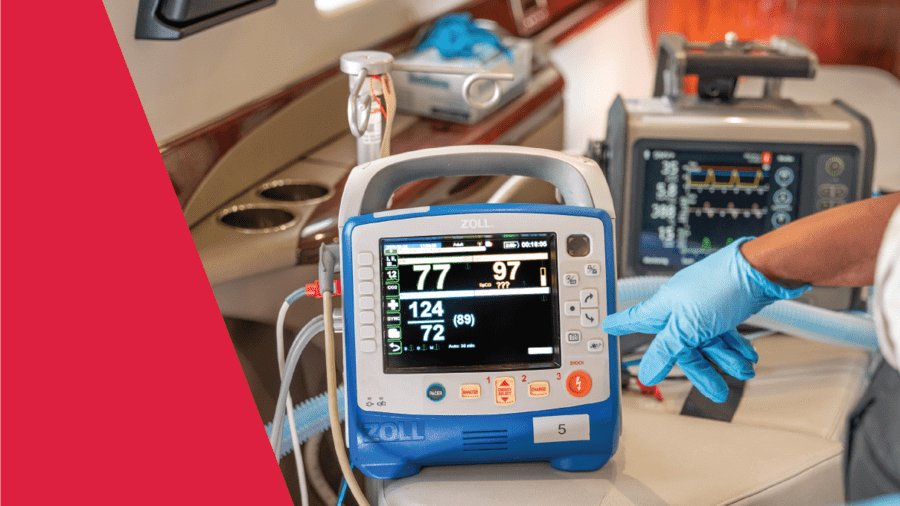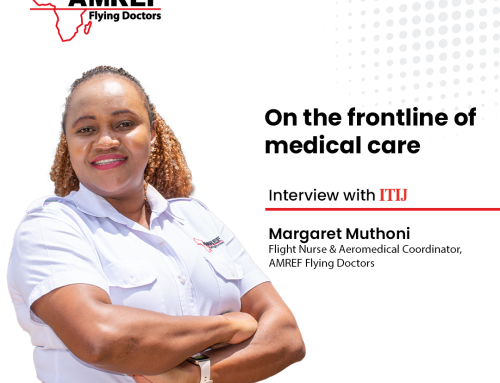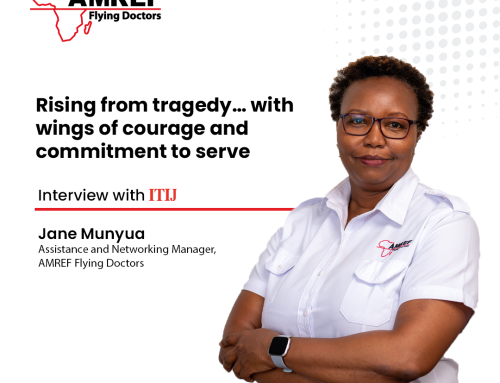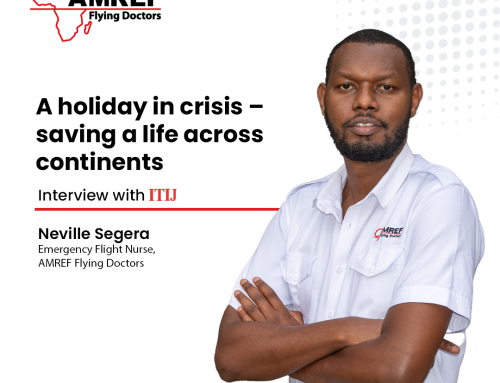AMREF Flying Doctors recently performed a complex successful long-distance aeromedical evacuation
AMREF Flying Doctors recently executed a complex and critical long-distance medical evacuation mission of a critically ill patient from the Seychelles to Germany. A patient suffering from Stevens-Johnson Syndrome (SJS), a rare and life-threatening disorder, required urgent specialised treatment unavailable in the Seychelles. With the patient’s condition deteriorating, AMREF Flying Doctors mobilised a dedicated medical team and deployed their Cessna Citation Sovereign air ambulance to ensure a seamless transfer to Germany.
The challenge: a high-risk medical emergency
Stevens-Johnson Syndrome is a severe reaction affecting the skin and mucous membranes, often triggered by medication or infection. It results in widespread skin blistering, peeling, and intense inflammation, making even the slightest pressure or movement excruciatingly painful. Due to the patient’s compromised immune system and inability to retain fluids, a high level of specialised medical care was essential. When AMREF Flying Doctors received the emergency call, time was of the essence. The patient’s condition was rapidly worsening, requiring immediate medical intervention and evacuation to a facility with advanced treatment capabilities. This was no ordinary mission – the flight team had to navigate multiple medical, logistical, and operational challenges to ensure a safe transfer.
Expert execution: delivering world-class aeromedical care
Understanding the complexity of the case, AMREF Flying Doctors meticulously planned the mission.
Due to the patient’s compromised immune system and inability to retain fluids, a high level of specialised medical care was essential
The Cessna Citation Sovereign was selected due to its long-range capabilities, high speed, and state-of-the-art onboard medical equipment, ensuring a stable environment for the patient throughout the journey.
Pre-flight preparation: a critical step
Before takeoff, the AMREF Flying Doctors medical team, comprising an experienced flight doctor and critical care nurse, arrived in the Seychelles early to perform a full-body dressing. This was a crucial step to minimise the risk of further skin damage and infection during the long-haul flight. Given the delicate nature of SJS, every movement and procedure had to be executed with exceptional precision and gentleness to avoid exacerbating the patient’s condition.
Patient loading process: a delicate operation
Once the patient was stabilised and securely positioned, the medical team carefully executed the delicate process of loading them onto the aircraft stretcher. Due to the extreme sensitivity of the patient’s skin, even minor friction or pressure had to be minimised. The crew coordinated every movement precisely, ensuring a pain-free transition onto the stretcher and into the aircraft. Additional cushioning was used to reduce contact stress, and the team continuously monitored for any signs of distress.
Given the delicate nature of SJS, every movement and procedure had to be executed with exceptional precision
In-flight critical care
Cabin adjustments were made to regulate temperature and humidity – critical factors in preventing further complications. The patient also received continuous pain management and anxiety medication to enhance their comfort. Throughout the flight, AMREF Flying Doctors’ medical crew maintained round-the-clock monitoring, ensuring vital signs remained stable. The aircraft was equipped with advanced life support systems, intravenous fluid management, pain control measures, and emergency resuscitation equipment, all critical for managing a condition as severe as SJS.
Navigating airspace restrictions and route planning
Adding to the complexity, the flight route required meticulous planning. Airspace restrictions over Sudan and the Middle East necessitated the implementation of contingency plans in case diversions were required. The flight crew worked closely with air traffic controllers to secure the smoothest possible path, ensuring minimal turbulence and stress on the patient. Given the fragile nature of the case, avoiding airspace with unpredictable conditions was paramount to the patient’s safety. The impact: a mission that saved a life After a meticulously executed mission, the aircraft landed safely in Germany, where a specialised medical team was on standby to receive the patient. The seamless coordination between AMREF Flying Doctors’ medical and flight crews, air traffic controllers, and ground medical teams ensured a successful handover for continued critical care.
After a meticulously executed mission, the aircraft landed safely in Germany
Reflecting on the mission, Dr Lelo, Medical Director at AMREF Flying Doctors, stated:
“Every mission is unique, but this one was particularly challenging due to the fragility of the patient’s skin. Our ability to go above and beyond – arriving early to perform essential dressings – made a critical difference in ensuring a safe and comfortable evacuation.”
First Published: ITIJ Magazine | March 2025
Author: Dr. Joseph Lelo
Editor: Jane W. Muthoni













